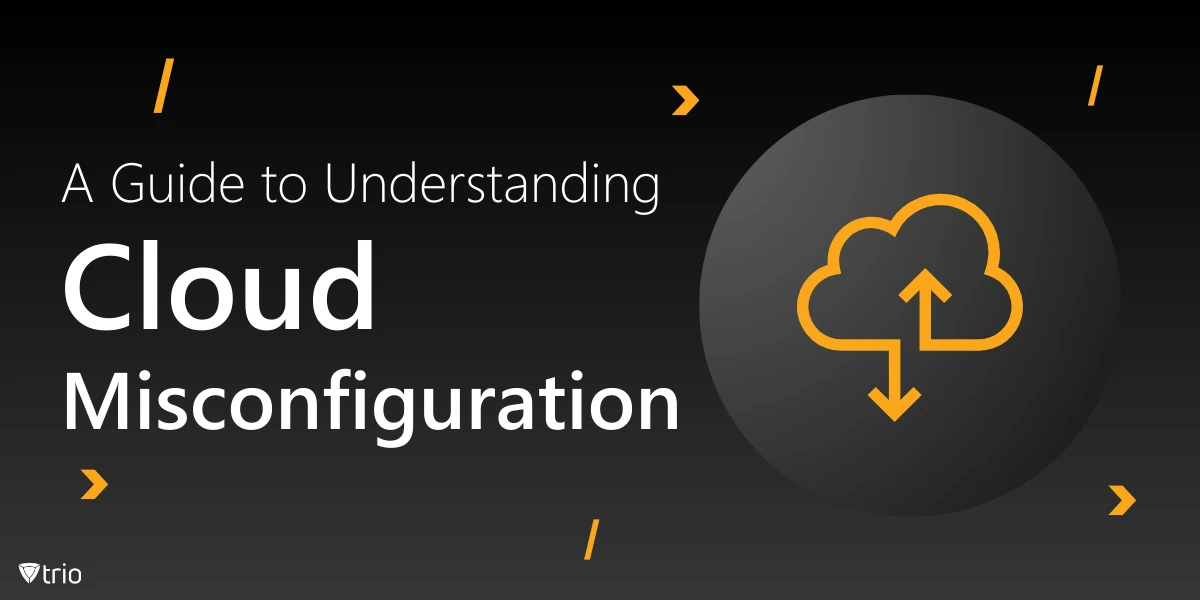As organizations increasingly migrate to cloud environments, the convenience and scalability of cloud services bring new challenges, especially when it comes to security. One of the most prevalent and costly security risks in cloud computing is cloud misconfiguration. This occurs when cloud settings, permissions, or access controls are incorrectly set, exposing sensitive data and applications to potential threats. In this blog post, we'll dive into what cloud misconfiguration is, explore common causes, discuss its implications, and provide steps for preventing it in your organization.
What is Cloud Misconfiguration?
Cloud misconfiguration happens when cloud resources, services, or environments are set up incorrectly or in ways that create security vulnerabilities. These cloud vulnerabilities can include publicly accessible data storage, unrestricted administrative privileges, or insufficient encryption practices. When cloud resources are misconfigured, they can be exposed to unauthorized users, potentially leading to cloud computing security breaches, service outages, and compliance violations. Cloud misconfiguration statistics, such as the Flexera 2024 State of the Cloud Report, find that the top cloud challenges are security, spending, and lack of expertise.
The Consequences of Cloud Misconfiguration
Misconfiguration issues in the cloud can lead to severe consequences, ranging from financial loss to reputational damage. Here are some significant risks associated with cloud misconfiguration:
- Data Exposure and Breaches: Publicly accessible cloud storage is a frequent issue in cloud misconfiguration. Sensitive data left open to the public can lead to unauthorized access, resulting in data leaks, intellectual property theft, or compliance violations.
- Financial Loss: Organizations may face hefty fines for non-compliance with data protection laws if misconfigured resources expose customer data. Additionally, the financial impact of remediation, loss of customer trust, and legal actions can further strain budgets.
- Service Disruptions: Misconfigurations can inadvertently make services unavailable or unstable. Downtime can severely impact productivity and the customer experience, leading to financial repercussions.
- Increased Attack Surface: Misconfigured resources can inadvertently open up attack vectors. For example, if a database is set to be publicly accessible, it becomes a target for cybercriminals who may exploit cloud security vulnerabilities through misconfiguration attacks to extract valuable information or inject malicious software.
Cloud Infrastructure Misconfiguration Examples
Cloud infrastructure misconfigurations are often due to improperly set permissions, unsecured resources, or insufficient security practices. Here are some common cloud misconfiguration examples:
- Publicly Accessible Storage Buckets: Leaving cloud storage buckets, such as AWS S3, publicly accessible is a frequent security misconfiguration example. Without access restrictions, sensitive data can be viewed or downloaded by anyone with the URL.
- Unrestricted Security Group Settings: Security groups that allow inbound access from “anywhere” (0.0.0.0/0) create an open door to cloud-based services. For instance, an open SSH port (port 22) accessible to the entire internet could allow attackers to brute-force their way into the system.
- Overly Permissive IAM Policies: Granting users or applications excessive permissions can lead to security risks. For example, giving a user full administrative privileges without restrictions can enable them to access, modify, or delete sensitive resources.
- Unsecured APIs: Exposed APIs without proper authentication controls or rate limiting are vulnerable to attacks. Attackers can exploit unprotected APIs to retrieve data or launch denial-of-service (DoS) attacks.
- Inactive Resources Left Unsecured: Unused virtual machines, storage buckets, or databases that remain unmonitored can become vulnerable over time. Without regular updates or security patches, these resources can be targeted by cybercriminals.
- No Encryption for Data at Rest or in Transit: Failing to enable encryption can expose sensitive data stored in cloud databases, storage buckets, or during data transfers. Unencrypted data is more susceptible to interception and unauthorized access.
- Weak or Absent Logging and Monitoring: Without proper logging and monitoring, suspicious activity in cloud environments can go unnoticed. Failure to enable CloudTrail in AWS, for instance, means you might not capture and review essential data on account activity.
5 Common Causes of Cloud Misconfiguration
Understanding the causes behind cloud misconfiguration can help in mitigating the risks associated with it. Here are some common reasons why cloud misconfiguration occurs:
- Complexity of Cloud Environments: Cloud environments are often complex, with a multitude of services, resources, and configurations to manage. This complexity can result in settings being overlooked or incorrectly applied.
- Lack of Expertise: Cloud infrastructure requires specialized knowledge. Inexperienced or under-trained staff may make mistakes in configuring access controls, permissions, and other security settings.
- Rapid Scaling and Provisioning: The ability to quickly provision resources in the cloud is convenient but can lead to hasty configuration practices. Teams under pressure to deploy resources may skip best practices or fail to review security settings.
- Insufficient Oversight and Governance: Without proper governance and monitoring, misconfigurations can go unnoticed for extended periods. Organizations need to ensure continuous visibility into their cloud environment and maintain consistent security policies.
- Inconsistent Security Policies: In hybrid or multi-cloud environments, maintaining consistent security policies can be challenging. Different platforms may have unique security requirements, leading to inconsistent configurations and potential cloud computing vulnerabilities.

Steps to Prevent Cloud Misconfiguration
Preventing cloud misconfiguration requires a proactive approach and a combination of tools, processes, and best practices. Here are some steps to help minimize the risk of misconfiguration in your cloud environment:
1. Implement Cloud Security Posture Management (CSPM) Tools
CSPM tools are designed to continuously monitor and assess cloud environments for misconfigurations and policy violations. These tools can automatically scan cloud resources, identify potential security risks, and provide remediation guidance. By deploying CSPM, organizations can maintain real-time visibility into their cloud security posture and ensure compliance with security standards.
2. Use Identity and Access Management (IAM) Best Practices
Restricting permissions based on the principle of least privilege is a fundamental step in reducing cloud misconfiguration risks. Use IAM best practices to ensure that users, groups, and roles have only the permissions they need to perform their tasks. Avoid assigning broad permissions, such as “admin” access, unless absolutely necessary.
3. Regularly Conduct Security Audits and Penetration Testing
Conducting routine security audits and penetration tests helps to identify misconfigurations and vulnerabilities in your cloud infrastructure. By reviewing access logs, permission settings, and security configurations, you can proactively identify and address potential security gaps.
4. Enable Multi-Factor Authentication (MFA)
MFA adds an extra layer of security by requiring additional authentication methods beyond just passwords. Enabling MFA for access to your cloud environment helps prevent unauthorized access even if user credentials are compromised.
5. Train Staff and Promote Security Awareness
Educate your team on cloud security best practices and the importance of following security protocols. By fostering a culture of security awareness, you empower staff to recognize potential risks and understand the critical role they play in protecting the organization’s cloud infrastructure.
6. Automate Compliance Checks and Reporting
Automate compliance checks to ensure cloud resources adhere to security policies and regulatory standards. Automated reporting can alert your team to policy violations, helping them to promptly address any misconfigurations before they lead to incidents.
7. Establish a Cloud Governance Framework
Create a cloud governance framework that defines policies for security, access control, data management, and compliance. Establish clear protocols for resource provisioning, configuration management, and incident response. A robust governance framework helps ensure consistent security practices across your cloud environment.
Tools for Cloud Misconfiguration Detection and Prevention
Several tools can assist in detecting and preventing cloud misconfigurations. Here are a few commonly used solutions:
- AWS Config: Continuously monitors and evaluates AWS resource configurations for compliance.
- Google Cloud Security Command Center: Provides visibility into security and data risks for Google Cloud environments.
- Azure Security Center: Delivers integrated security monitoring and policy management for Azure resources.
Building a Culture of Security in the Cloud
Preventing cloud misconfiguration is not a one-time effort; it requires ongoing vigilance and a commitment to security. By incorporating cloud security practices into your organization’s culture, you create an environment where security is everyone’s responsibility. Encourage regular training, promote adherence to security protocols, and foster an open dialogue about potential security risks.
Misconfiguration in the cloud can be costly, but it’s preventable. With the right tools, practices, and a proactive approach, organizations can minimize risks and enjoy the benefits of a secure cloud environment. By addressing cloud misconfiguration now, your organization will be better prepared to meet evolving security challenges and protect sensitive data against potential threats.
Conclusion
Cloud misconfiguration remains a significant security risk as organizations expand their cloud footprint. By understanding the causes and implications of misconfiguration and implementing strong preventative measures, you can safeguard your cloud environment against data breaches and other security incidents.
With Trio’s Mobile Device Management solutions, you gain visibility and control over your cloud-connected devices, ensuring secure, compliant cloud operations. Start with a free trial today and protect your organization from the risks of misconfiguration.
Get Ahead of the Curve
Every organization today needs a solution to automate time-consuming tasks and strengthen security.
Without the right tools, manual processes drain resources and leave gaps in protection. Trio MDM is designed to solve this problem, automating key tasks, boosting security, and ensuring compliance with ease.
Don't let inefficiencies hold you back. Learn how Trio MDM can revolutionize your IT operations or request a free trial today!





